
Ancient Burial Mounds of Jordan: Echoes of the Past
Explore the ancient burial mounds of Jordan, where history and nature intertwine to reveal the secrets of past civilizations.
Jordan's ancient burial mounds provide a fascinating glimpse into the region's rich history. These mounds, often referred to as 'tumuli,' are scattered across the Jordanian landscape. They date back thousands of years, offering a unique look into the burial practices of ancient civilizations that once thrived here. Many of these burial mounds are located in picturesque and remote areas, affording visitors a serene and contemplative experience. The mounds vary in size and structure, indicating their significance and the status of the individuals buried within. Archaeological finds from these sites have provided invaluable insights into the culture, beliefs, and daily lives of ancient Jordanians. Visitors to the burial mounds will not only be struck by their historical significance but also by the breathtaking natural surroundings. The vast, open landscapes and the quietude of these sites make them a perfect spot for reflection and connection to the past. Whether you're a history buff or simply looking to explore something off the beaten path, Jordan's burial mounds offer a truly unique and enriching experience.
Local tips in Burial Mounds
- Wear comfortable walking shoes as some mounds are in remote areas requiring a short hike.
- Visit early in the morning or late afternoon to avoid the midday heat.
- Bring plenty of water and snacks, as there are no facilities nearby.
- Consider hiring a local guide to gain deeper insights into the history and significance of the mounds.
- Respect the sites by not climbing on the mounds or disturbing the surroundings.
Ancient Burial Mounds of Jordan: Echoes of the Past
Jordan's ancient burial mounds provide a fascinating glimpse into the region's rich history. These mounds, often referred to as 'tumuli,' are scattered across the Jordanian landscape. They date back thousands of years, offering a unique look into the burial practices of ancient civilizations that once thrived here. Many of these burial mounds are located in picturesque and remote areas, affording visitors a serene and contemplative experience. The mounds vary in size and structure, indicating their significance and the status of the individuals buried within. Archaeological finds from these sites have provided invaluable insights into the culture, beliefs, and daily lives of ancient Jordanians. Visitors to the burial mounds will not only be struck by their historical significance but also by the breathtaking natural surroundings. The vast, open landscapes and the quietude of these sites make them a perfect spot for reflection and connection to the past. Whether you're a history buff or simply looking to explore something off the beaten path, Jordan's burial mounds offer a truly unique and enriching experience.
When is the best time to go to Burial Mounds?
Iconic landmarks you can’t miss
Petra
Explore Petra, the magnificent Rose City, an archaeological marvel filled with stunning rock-cut architecture and rich Nabataean history.

Amman Citadel
Discover the ancient allure of Amman Citadel, a historical landmark steeped in rich heritage and breathtaking views of Jordan's capital.

Roman Theater
Discover the grandeur of the Roman Theater in Amman, a stunning historical landmark that showcases ancient architecture and vibrant cultural events.

The Treasury
Explore The Treasury, Petra's iconic archaeological site, a magnificent testament to Nabatean artistry and ancient history in the heart of Jordan.
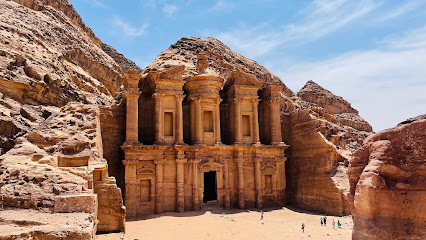
Wadi Rum Protected Area
Discover the enchanting beauty of Wadi Rum, a UNESCO World Heritage site in Jordan, featuring stunning desert landscapes and rich cultural heritage.

Intercontinental Amman (Jordan)
Experience luxury and elegance at Intercontinental Amman, with exceptional dining, stunning views, and top-notch amenities in the heart of Jordan's capital.

Ajloun Castle
Explore Ajloun Castle, a stunning 12th-century fortress in northern Jordan, rich in history and offering breathtaking views of the surrounding landscape.

The Jordan Museum
Explore the treasures of Jordan's history at The Jordan Museum, an art and archaeological haven in the heart of Amman.

Kerak Castle
Discover the grandeur of Kerak Castle, a captivating historical landmark in Jordan showcasing medieval architecture and breathtaking views.

Umm Qays
Explore the ancient ruins of Umm Qays, where stunning views and rich history create an unforgettable experience for every traveler.

The Monastery
Explore The Monastery in Petra, Jordan - a breathtaking historical landmark showcasing ancient Nabatean architecture amidst stunning desert landscapes.

Memorial Church of Moses
Experience the spiritual essence and breathtaking views of the Memorial Church of Moses atop Mount Nebo, a pilgrimage for the soul and the senses.

Roman Temple of Hercules
Explore the Roman Temple of Hercules in Amman, a historical gem showcasing ancient architecture and breathtaking views of Jordan's capital.

Mount Nebo
Explore Mount Nebo, a sacred biblical site in Jordan with panoramic views of the Holy Land, perfect for spiritual seekers and nature lovers.

Al-Siq
Explore the enchanting Al-Siq gorge, the breathtaking gateway to Petra, where nature and history intertwine to create an unforgettable experience.

Unmissable attractions to see
The Children's Museum Jordan
Discover the joy of learning through play at The Children's Museum Jordan, an imaginative destination for families in Amman, packed with interactive exhibits and fun.
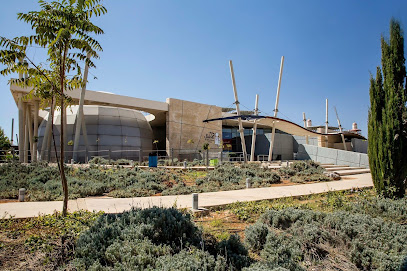
Umayyad Palace
Discover the Umayyad Palace in Amman, a stunning historical landmark showcasing ancient architectural brilliance and panoramic city views.

Byzantine Church Petra
Discover the Byzantine Church in Petra, a historical gem featuring stunning mosaics and rich archaeological heritage in Jordan's iconic ancient city.

Royal Tombs
Explore the Royal Tombs in Wadi Musa, a breathtaking historical landmark showcasing ancient Nabataean artistry in stunning Petra.

Essential places to dine
Jubran || جبران || Amman Abdali Boulevard
Discover exquisite Middle Eastern flavors at Jubran in Amman's Abdali Boulevard—a must-visit culinary destination for every tourist.

Mijana
Experience the rich flavors of Middle Eastern cuisine at Mijana in Amman—perfect for families seeking authentic dining experiences.

Tawaheen AlHawa
Experience authentic Jordanian cuisine at Tawaheen AlHawa in Amman – where tradition meets taste.

Fakhreldin Restaurant
Experience authentic Lebanese flavors at Fakhreldin Restaurant in Amman - where tradition meets modern dining excellence.

Levant Restaurant
Experience authentic Armenian cuisine in Amman at Levant Restaurant – where every dish tells a story.

Reem AlBawadi Restaurant
Experience the rich tapestry of Middle Eastern cuisine at Reem AlBawadi Restaurant in Amman - where tradition meets taste.

Sufra Restaurant
Experience the rich flavors of Middle Eastern cuisine at Sufra Restaurant in Amman - where tradition meets taste.

Wild Jordan Center
Discover authentic Jordanian flavors at Wild Jordan Center while supporting sustainability and local artisans in Amman.

Boho Haus
Experience the perfect blend of modern cuisine and bohemian charm at Boho Haus in Amman.
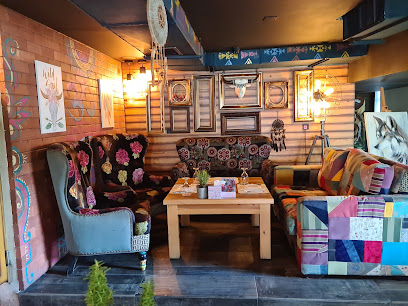
Blue Fig
Discover Blue Fig Café: A Culinary Oasis in Amman's Heart Offering Exquisite Dishes & Vibrant Ambiance for Every Occasion.

Lucca Steakhouse
Discover culinary excellence at Lucca Steakhouse in Amman - where premium steaks meet exquisite dining experiences.

HIGH GARDEN Rooftop
Discover the ultimate dining experience at HIGH GARDEN Rooftop in Amman – where culinary excellence meets breathtaking views.

Kan Zaman
Discover Kan Zaman: A premier Middle Eastern restaurant in Amman offering authentic flavors and vibrant cultural experiences.

Fatatri فططري
Experience the best of Middle Eastern cuisine at Fatatri in Amman – where every meal is a celebration of flavor and tradition.

Jordan Heritage Restaurant مطعم ارث الاردن
Experience authentic Jordanian cuisine in Amman at Jordan Heritage Restaurant - where tradition meets flavor in every dish.
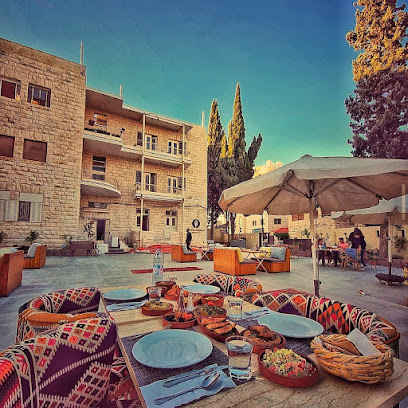
Markets, malls and hidden boutiques
Abdali Mall
Experience the vibrant shopping, dining, and entertainment at Abdali Mall, the ultimate destination in Amman, Jordan.

Taj Lifestyle Center
Discover the vibrant shopping, dining, and entertainment experience at Taj Lifestyle Center in Amman, Jordan, where modern luxury meets local culture.

The Jordan Museum
Discover Jordan's rich heritage at The Jordan Museum, home to priceless artifacts and interactive exhibits showcasing the nation's history.

Swefieh Village
Explore Swefieh Village in Amman: A vibrant shopping hub offering local and international brands, delightful dining, and entertainment options for all.

Dana Biosphere Reserve
Discover the breathtaking landscapes and rich biodiversity of Dana Biosphere Reserve, a premier destination for nature lovers in Jordan.

Madaba Archaeological Park
Explore the ancient wonders of Madaba Archaeological Park, where history and art intertwine in the heart of Jordan's rich cultural landscape.

Jordan Craft Center
Explore the Jordan Craft Center for authentic handicrafts, cultural treasures, and a vibrant experience of Jordan's rich artisan traditions.

Jordan River Designs
Explore Jordan River Designs: A treasure trove of handcrafted gifts and unique Jordanian souvenirs in Amman, celebrating local craftsmanship and culture.

Pearl Of Jordan
Explore the Pearl of Jordan, a charming souvenir store in Swemeh, showcasing authentic local crafts and meaningful keepsakes for every traveler.
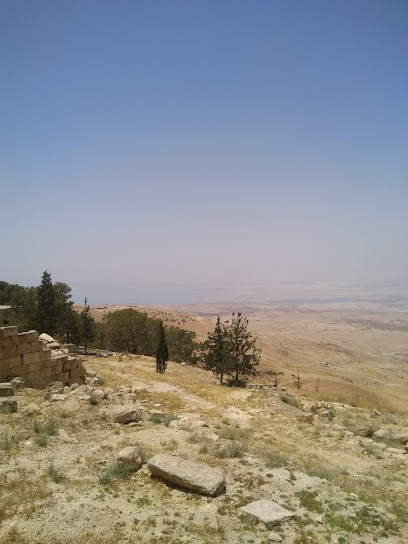
Black Iris Handicrafts
Explore the vibrant world of Jordanian craftsmanship at Black Iris Handicrafts, where every piece tells a story of tradition and artistry.

Black Iris Amman
Explore the vibrant Black Iris Amman, a shopping haven filled with unique treasures and local charm in the heart of Al Abdali.

Ola's Garden
Explore Ola's Garden in Amman, where local artistry meets fashion in a colorful gallery of unique handicrafts.

All From Jordan
Explore the vibrant craft and cosmetics store in Amman, All From Jordan, for unique handmade treasures and beauty products reflecting local culture.

Tree Of Life مركز شجرة الحياة
Explore The Tree of Life near Mount Nebo, where Jordanian craftsmanship meets unforgettable souvenirs to cherish your travel memories.

Dead Sea Treasures - Amman - Jordan
Explore Dead Sea Treasures in Amman for unique cosmetics and gifts inspired by the healing properties of the Dead Sea.

Essential bars & hidden hideouts
The Corner's Pub
Experience the vibrant atmosphere of The Corner's Pub in Amman, where delicious food and a fantastic drink selection await you.

Good Pub
Discover Good Pub in Amman, where vibrant atmosphere meets delicious food and drinks for an unforgettable night out.

Dubliners
Experience the authentic atmosphere of an Irish pub in Amman at Dubliners, where great food, drinks, and live music create unforgettable memories.

Brick Lane Restaurant & Pub
Discover the lively Brick Lane Restaurant & Pub in Amman, where British charm meets Irish hospitality in a vibrant sports bar atmosphere.

Murphy's - House of Rock
Experience the lively ambiance and delightful cuisine at Murphy's - House of Rock in Amman, a perfect blend of pub and garden relaxation.

SNUG
Discover the lively ambiance and delicious offerings at SNUG in Amman, where culinary delight meets vibrant social experiences.
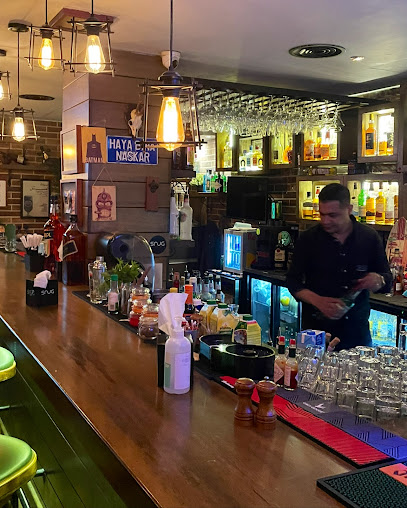
Houston's Restaurant And Pub
Experience the vibrant flavors of Houston's Restaurant And Pub in Amman, blending American grill with local Middle Eastern delights.

The Nub
Discover the vibrant nightlife of Amman at The Nub, where exquisite drinks and delightful dishes create the perfect evening atmosphere.

The Cave Bar
Discover the enchanting ambiance of The Cave Bar in Wadi Musa, a perfect retreat for drink lovers after exploring Petra's ancient wonders.

Kegs House of Ale
Experience the best of Amman's nightlife at Kegs House of Ale, where great beers, delicious food, and a lively atmosphere come together.

Black Iris Rooftop
Discover the vibrant nightlife and stunning views at Black Iris Rooftop, the ultimate lounge experience in Amman.

MIST Restaurant & Pub
Discover the vibrant flavors and lively atmosphere at MIST Restaurant & Pub in Amman, a perfect blend of local and international cuisine.

Chaos
Discover the vibrant nightlife of Amman at Chaos, a lively bar offering a unique mix of local flavors and international drinks.

Uncle Sam Pub 1975
Experience the lively atmosphere of Uncle Sam Pub in Amman, where great food, drinks, and local culture come together for an unforgettable night out.

The Leprechaun Restaurant & Pub
Experience the lively atmosphere and authentic Irish hospitality at The Leprechaun Restaurant & Pub in Amman, perfect for relaxation and enjoyment.

Local Phrases about Burial Mounds
-
- HelloMarhaba
[mahr-hah-bah] - GoodbyeMa'a as-salama
[mah-ah ah-sah-lah-mah] - YesNa'am
[nah-ahm] - NoLa
[lah] - Please/You're welcomeMin fadlik
[meen fahd-leek] - Thank youShukran
[shook-rahn] - Excuse me/SorryAasif
[ah-seef] - How are you?Kif halak?
[keef hah-lahk] - Fine. And you?Mni7. W inta?
[mnee-ha. oo een-tah] - Do you speak English?Betetkalem Englezi?
[beh-teh-kah-lem eng-leh-zee] - I don't understandAna mish fahem
[ah-nah meesh fah-hem]
- HelloMarhaba
-
- I'd like to see the menu, pleaseBiddi ara il menu, min fadlik
[beed-dee ah-rah eel meh-noo, meen fahd-leek] - I don't eat meatAna ma beklil lahme
[ah-nah mah beh-kleel lah-meh] - Cheers!Saha
[sah-hah] - I would like to pay, pleaseBiddi adfa, min fadlik
[beed-dee ad-fah, meen fahd-leek]
- I'd like to see the menu, pleaseBiddi ara il menu, min fadlik
-
- Help!Musaa'ada!
[moo-sah-ah-dah] - Go away!Ruh!
[roo-h] - Call the Police!Itsal il Shurta!
[eets-al eel shoor-tah] - Call a doctor!Itsal Tabeeb!
[eets-al tah-beeb] - I'm lostGha'it
[ghah-eet] - I'm illAna mareed
[ah-nah mah-reed]
- Help!Musaa'ada!
-
- I'd like to buy...Biddi ashtri...
[beed-dee ash-tree] - I'm just lookingAna bas bitshoof
[ah-nah bas beet-shoof] - How much is it?Kam bi-sir?
[kam bee-seer] - That's too expensiveHad ghalieh ziyadeh
[had ghah-lee-eh zee-yah-deh] - Can you lower the price?Btetsir il si3r?
[bteh-seer eel seer]
- I'd like to buy...Biddi ashtri...
-
- What time is it?Kam issa?
[kam ees-sah] - It's one o'clockHua wahad bil saa
[hoo-ah wah-had beel sah-ah] - Half past (10)Nisf sa3a (10)
[neess-f sah-ah (10)] - MorningSaba7
[sah-bah-h] - AfternoonDuhur
[doo-hoor] - Evening3asha
[ah-shah] - YesterdayAms
[ahms] - TodayLyowm
[lyowm] - TomorrowGhadan
[ghah-dahn] - 1Wahad
[wah-had] - 2Ithnayn
[ith-nayne] - 3Thalatha
[thal-ah-thah] - 4Arba'a
[ar-bah-ah] - 5Khamsa
[kham-sah] - 6Sitta
[sit-tah] - 7Saba'a
[sah-bah-ah] - 8Thamania
[tha-mah-nee-ah] - 9Tis'a
[tees-ah] - 10Ashara
[ah-shah-rah]
- What time is it?Kam issa?
-
- Where's a/the...?Wayn il...
[wain eel] - What's the address?Sho sikkah?
[sho see-kah] - Can you show me (on the map)?Btirini (3ala il khareeta)?
[bteh-ree-nee (ah-lah eel kha-ree-tah)] - When's the next (bus)?Idday saff il taari?
[eed-day sahf eel tah-ree] - A ticket (to ....)Talab (ila ....)
[tah-lab (ee-lah ....)]
- Where's a/the...?Wayn il...
History of Burial Mounds
-
Jordan's ancient burial mounds, also known as tumuli, are a testament to the region's rich and complex history. Scattered across the landscape, these mounds date back to various periods, including the Bronze Age, Iron Age, and even the Nabatean and Roman periods. They offer unique insights into the funerary practices, social structures, and cultural exchanges of the civilizations that once thrived in this region.
-
During the Early and Middle Bronze Ages (circa 3300-1550 BCE), the inhabitants of Jordan began constructing burial mounds as part of their funerary traditions. These mounds were often built for individuals of high status and were accompanied by grave goods such as pottery, jewelry, and weapons. The construction of these mounds involved considerable effort, indicating the importance of the deceased and their role within the community.
-
The Iron Age (circa 1200-539 BCE) saw the continued use of burial mounds in Jordan, particularly among the tribal societies that inhabited the region. These mounds were sometimes grouped into large cemeteries, reflecting complex social and political structures. The grave goods found in these tumuli, including imported items, suggest that these societies engaged in extensive trade and cultural exchange with neighboring regions.
-
The Nabateans, an Arab people who established a flourishing kingdom in Jordan from the 4th century BCE to the 2nd century CE, also utilized burial mounds. These mounds, often located near their capital city of Petra, were part of elaborate necropolises. The Nabateans' burial practices reflected their beliefs in the afterlife and their connections with other cultures, as evidenced by the blend of Hellenistic, Roman, and indigenous elements in their funerary architecture.
-
With the Roman annexation of the Nabatean kingdom in 106 CE, Roman burial customs began to influence local practices. While traditional tumuli continued to be used, new forms of burial, such as rock-cut tombs and mausoleums, became more prevalent. This period also saw the introduction of epitaphs and funerary inscriptions in Latin and Greek, providing valuable historical records of the individuals buried within these mounds.
-
The study of Jordan's burial mounds has been greatly enhanced by modern archaeological techniques. Excavations have uncovered a wealth of information about the construction methods, grave goods, and cultural practices associated with these mounds. Advanced technologies such as ground-penetrating radar and DNA analysis are helping researchers to uncover new insights into the lives and deaths of the people who built and used these ancient structures.
-
Today, Jordan's burial mounds are recognized as important cultural heritage sites. Efforts are being made to preserve these ancient structures and protect them from looting and environmental damage. The mounds continue to be a source of fascination for both tourists and scholars, offering a tangible connection to the region's distant past and the diverse peoples who have called Jordan home over the millennia.
Burial Mounds Essentials
-
The Burial Mounds in Jordan, particularly the ones in the regions such as Amman and the Jordan Valley, are accessible via Queen Alia International Airport in Amman. From the airport, you can take a taxi or rent a car to reach the burial sites. Public buses also operate from Amman to various parts of the Jordan Valley, making it relatively easy to reach the burial mounds.
-
Within Amman and the Jordan Valley, you can use taxis, which are abundant and reasonably priced. Public buses and minibuses (known locally as 'service taxis') are a cost-effective way to travel between cities and towns. If you prefer more flexibility, car rentals are available in major cities. For a more immersive experience, consider hiring a local guide.
-
The official currency in Jordan is the Jordanian Dinar (JOD). Credit cards are widely accepted in hotels, restaurants, and larger shops, but it's advisable to carry cash for smaller establishments and rural areas. ATMs are available in major cities, but make sure to withdraw enough cash before heading to remote sites.
-
Jordan is generally safe for tourists, but it's wise to take standard precautions. Avoid walking alone at night in unfamiliar areas and keep an eye on your belongings in crowded places. Some areas in the outskirts of Amman and remote regions may have higher petty crime rates, so stay vigilant and aware of your surroundings.
-
In case of emergency, dial 911 for immediate assistance. Medical facilities are available in major cities like Amman. It's recommended to have travel insurance covering medical emergencies. For minor health issues, pharmacies are widely available. The local police are approachable and can assist with various emergency situations.
-
Fashion: Do dress modestly; avoid revealing clothing, especially at religious or historical sites. Religion: Do respect local customs and religious practices; cover your head and shoulders when visiting mosques. Public Transport: Do be respectful and offer your seat to elderly passengers. Don't eat or drink on public transport. Greetings: Do greet people with a handshake; a slight bow of the head is also a sign of respect. Eating & Drinking: Do try local delicacies and accept food offerings graciously. Don't refuse hospitality, as it is considered impolite.
-
To experience the Burial Mounds like a local, visit local markets in nearby towns for fresh produce and traditional Jordanian goods. Engage with locals, who are often friendly and willing to share stories about the history and culture of the area. Don't miss trying the local cuisine, such as Mansaf, and consider joining a guided tour to enhance your experience and understanding of the burial mounds.
Nearby Cities to Burial Mounds
-
Things To Do in Ma'an
-
Things To Do in Dana
-
Things To Do in Tafilah
-
Things To Do in Wadi Rum
-
Things To Do in Eilat
-
Things To Do in Aqaba
-
Things To Do in Kerak
-
Things To Do in Masada
-
Things To Do in Beersheba
-
Things To Do in Ein Gedi
-
Things To Do in Dead Sea
-
Things To Do in Bethlehem
-
Things To Do in Madaba
-
Things To Do in Jerusalem
-
Things To Do in Modi'in







